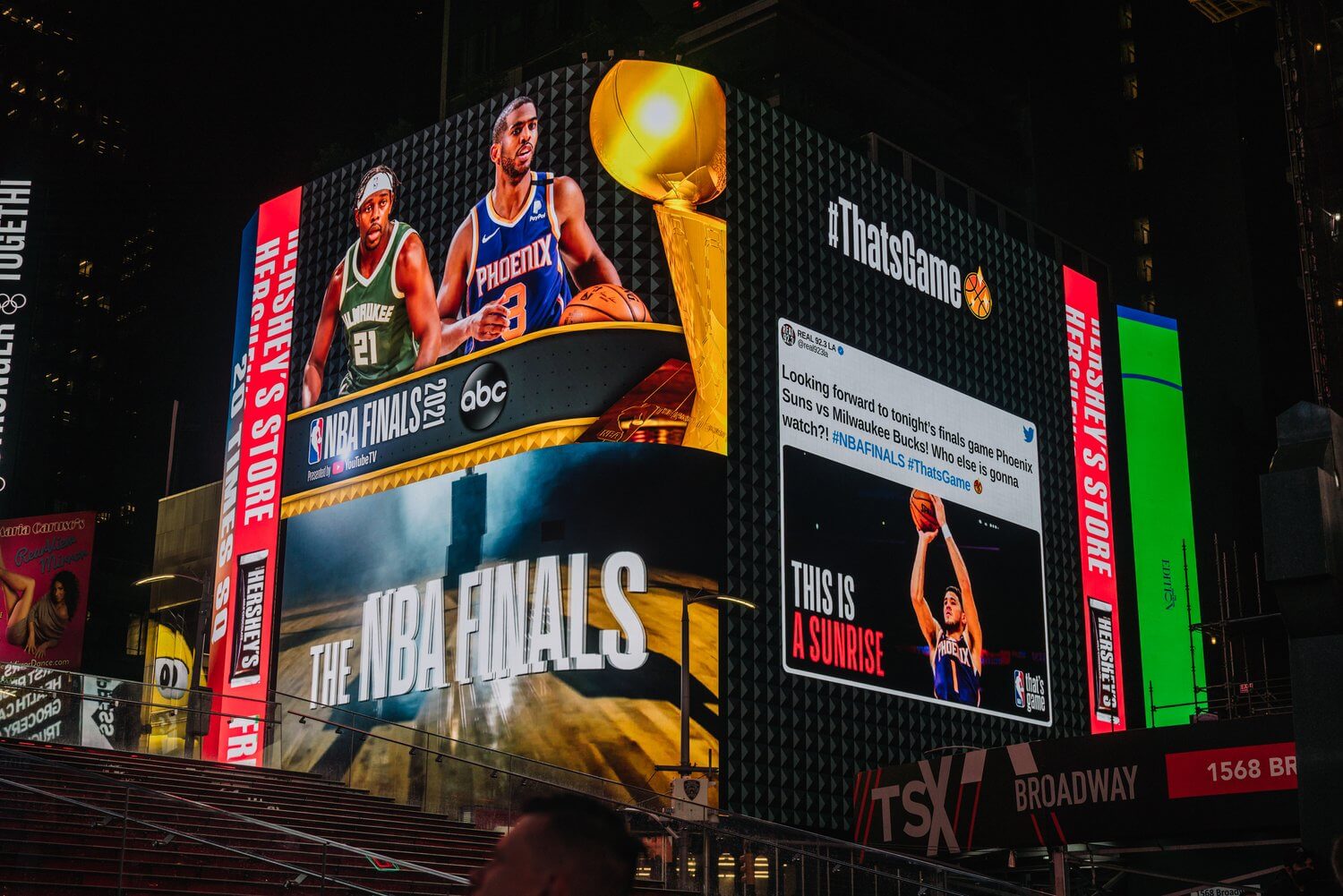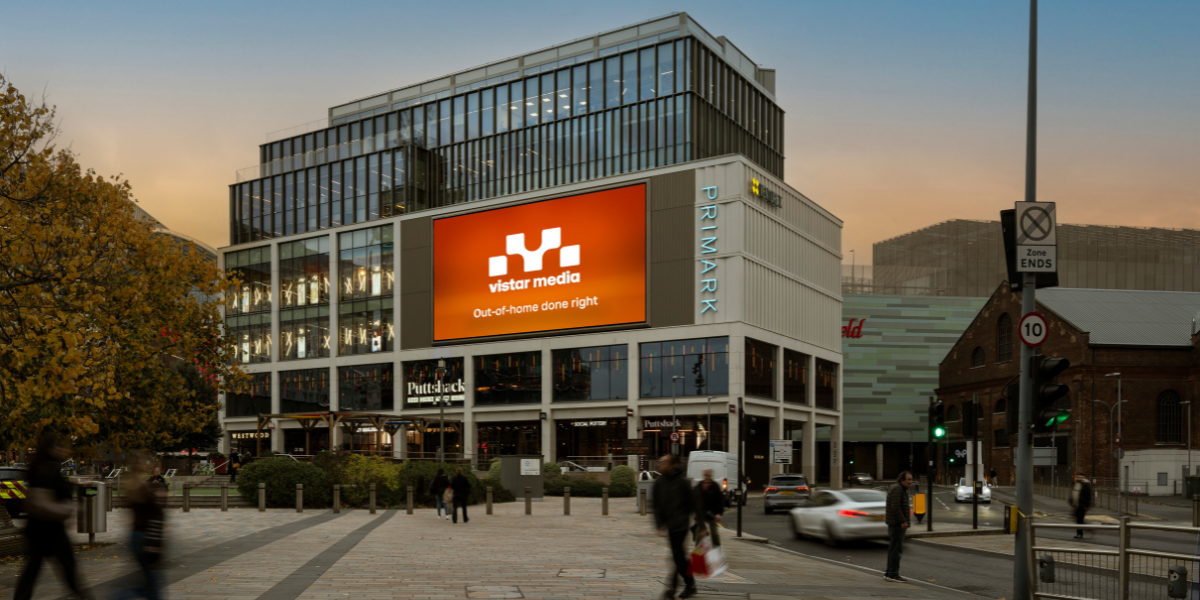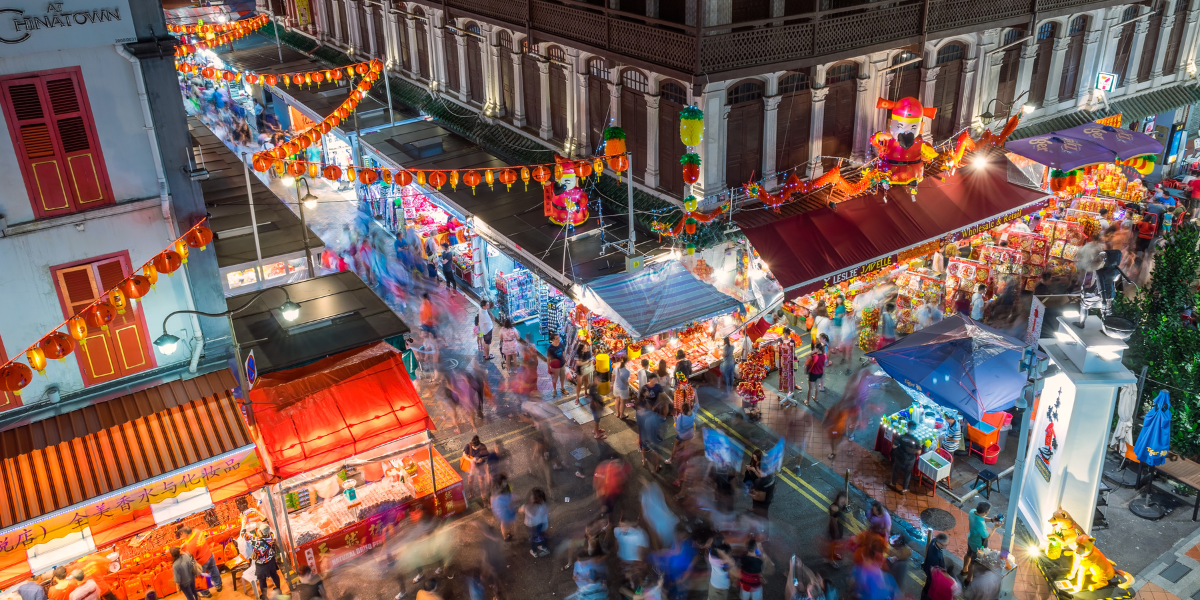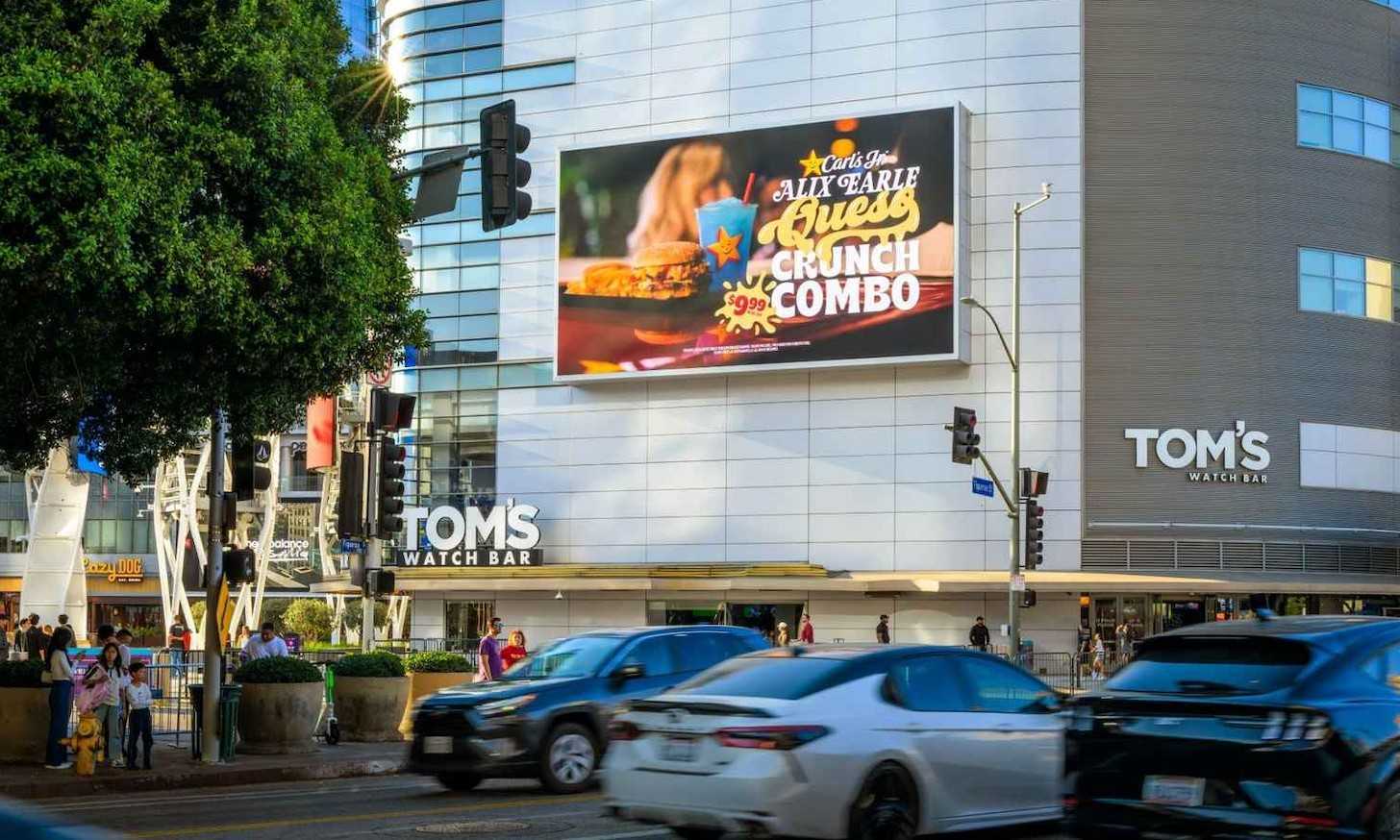
You’ve seen digital out-of-home (DOOH) advertising dominate the landscape with bold, unmissable outdoor signage, adding a new layer to the traditional DOOH format. But combine digital OOH with programmatic tech, and you get something even more powerful.
So, what exactly is programmatic digital out-of-home (pDOOH), and how does it work? Whether you’re new to the space or just looking to deepen your understanding, this blog breaks down what pDOOH is, why it matters and how brands are using it to connect with audiences in the real world, with more precision than ever before.
What is pDOOH?
pDOOH refers to the automated buying, selling and delivery of ad placements on digital screens in public spaces—everything from roadside billboards and urban panels to screens in malls, gyms, elevators and airports.
The “programmatic” part means that these ads are purchased through real-time bidding or automated platforms, not through manual insertion orders or direct negotiations. Think of it as a smarter, faster way to buy screen time in the physical world, powered by data and automation.
pDOOH vs. traditional OOH: What’s the difference?
Traditional out-of-home (OOH) includes static billboards, posters and other fixed placements. DOOH modernized this with digital screens that can display multiple creatives and change content in real time.
pDOOH takes it even further by automating the process and layering in sophisticated data targeting. It allows advertisers to:
- Target specific audiences
- Use dayparting (showing ads only during specific hours)
- Respond to real-world triggers like weather, sports scores or traffic
- Measure impressions and engagement more accurately
In short, pDOOH offers the reach of OOH with the precision of digital advertising.

How pDOOH works
pDOOH uses a demand-side platform (DSP) to purchase ad inventory. This inventory is made available through a supply-side platform (SSP), which is connected to millions of media owners’ screens across the globe. Here’s what the process typically looks like:
- Audience targeting: Based on demographics, behaviors, points of interest or real-world movement data, advertisers can define who they want their creative to reach.
- Bidding & buying: The DSP identifies available screens in relevant locations and places bids on behalf of the advertiser.
- Real-time delivery: If the advertiser wins the bid, the creative is displayed on the screen in real time.
- Reporting & optimization: Campaigns are monitored for performance, and delivery can be optimized continuously.
The beauty of this process is flexibility. Advertisers can shift budgets on the fly, test creative variations or scale up successful tactics—all without renegotiating contracts.
Where can you find pDOOH?
pDOOH inventory is available across a countless environments, including:
- Highway billboards
- Urban street furniture (e.g., bus shelters, kiosks)
- Transit stations and taxi tops
- Retail and grocery stores
- Airports and office buildings
- EV charging stations
- Gyms, bars and restaurants
Why pDOOH is a game-changer for advertisers
Here are a few key reasons brands are rapidly investing in programmatic DOOH:
1. Smarter targeting
With access to privacy-safe data, advertisers can zero in on where their audience will be. For example, a health food brand can target fitness enthusiasts or a car manufacturer can advertise near dealerships.
2. Flexible & efficient buys
Instead of committing to weeks-long campaigns, pDOOH offers the flexibility to run shorter flights, make real-time adjustments and allows you to extend a successful campaign with ease.
3. Contextual relevance
One of the most powerful advantages of pDOOH is the ability to deliver contextually relevant messaging—ads that adapt to real-world events in real time.
Rather than running the same static creative across every screen, pDOOH allows brands to tailor content based on environmental triggers, location data and audience behavior. That means your message isn’t just seen—it’s seen when and where it matters most.
Here are a few ways it plays out in the wild:
- Weather-based triggers: Promote sunscreen, sunglasses or iced beverages when the sun is shining—or shift to umbrellas, hot drinks or flu remedies when it’s cold and rainy. The ad matches the moment.
- Time-of-day messaging: Push coffee or breakfast deals during the morning commute, then switch to lunch promotions or happy hour specials as the day goes on.
- Location-specific content: Customize creative by ZIP code or even around a specific building or event. A retail brand could showcase an in-store sale happening a few blocks away, while a sports brand might highlight a local team’s gear on game day.
- Event-driven campaigns: Sync messaging with concerts, festivals or sporting events to align with high foot traffic and heightened brand engagement opportunities.
4. Scalable brand impact
pDOOH combines digital precision with physical-world visibility. It’s unskippable, unblockable and brand-safe—making it an ideal complement to online and mobile strategies.
5. Measurable results
One of the most powerful shifts in pDOOH is the ability to track and quantify campaign performance in new ways. Today’s platforms empower advertisers to go beyond simple impression counts and understand the actual impact of their media investment.
Brands can now measure key outcomes such as:
- Brand awareness and recall: Measure how many people remember seeing your ad and how strongly it influenced their perception of your brand.
- Online conversions after exposure: Connect the dots between online and offline actions, such as website visits or purchases.
- Footfall attribution: Connect your campaign to in-store or on-location visits.
These advanced metrics turn DOOH into a measurable channel backed by data, not guesswork. Whether the goal is to grow awareness, influence buying decisions or drive in-store activity, pDOOH provides the clarity needed to prove success and fine-tune strategy moving forward.

Real-world example: A quick glance
Let’s say a quick-service restaurant (QSR) wants to drive lunchtime visits near college campuses. With pDOOH, they could:
- Target screens within 1 mile of selected campuses
- Run ads only during class times, Monday–Friday
- Use creatives that highlight student deals
- Pause or shift spend based on which screens perform best
Who should use pDOOH?
Programmatic DOOH is an effective tool for:
- National brands looking to scale across multiple markets (even international markets)
- Regional advertisers targeting neighborhoods or DMAs
- Retailers wanting to drive in-store visits
- B2B brands reaching professionals at key touchpoints
- Event marketers amplifying awareness in a limited time window
- CPG brands looking to influence in-store purchase
From real estate to ride-share, consumer goods to cannabis, brands across industries are finding creative ways to use pDOOH to stand out in the real world.
The future of programmatic OOH
The future is bright for pDOOH. As more screens become connected and data capabilities expand, advertisers will gain even more control over how, when and where their ads appear. Innovations like dynamic creative, cross-channel integration with mobile and CTV are already beginning to shape what’s possible.
Whether you’re looking to boost brand awareness, drive foot traffic or engage new audiences on the move, pDOOH is a powerful tool worth exploring. Ready to bring your brand into the real world with digital precision? Contact us today to see how we can help you activate smarter, more effective real-world advertising.



